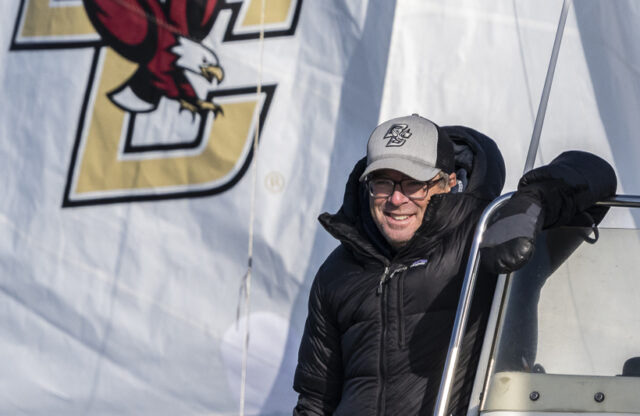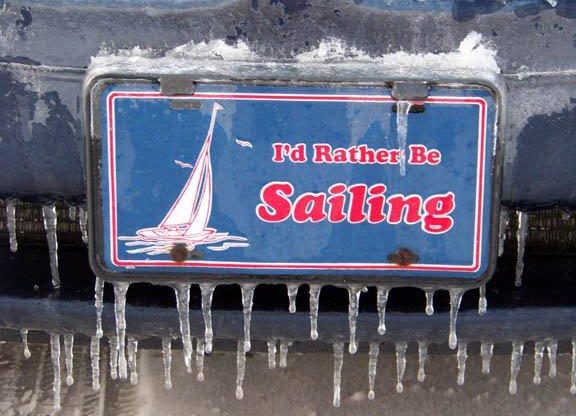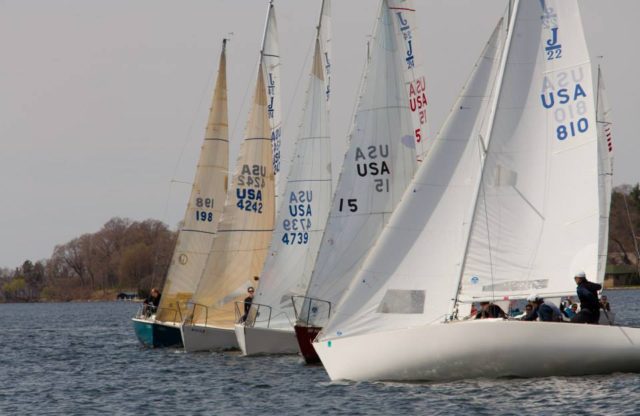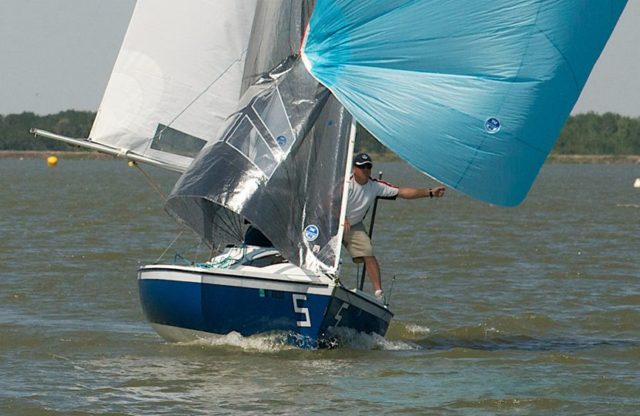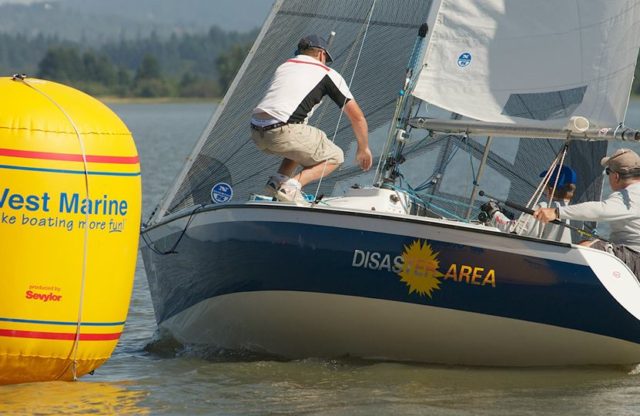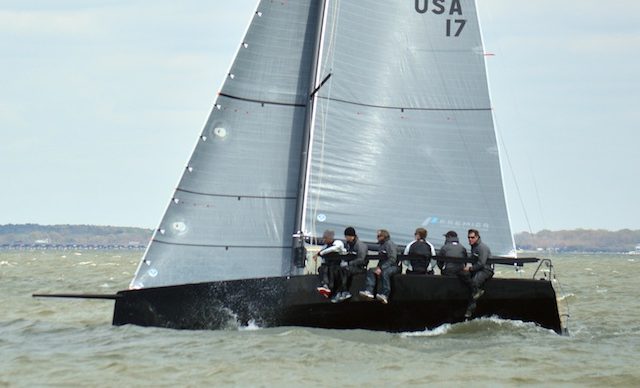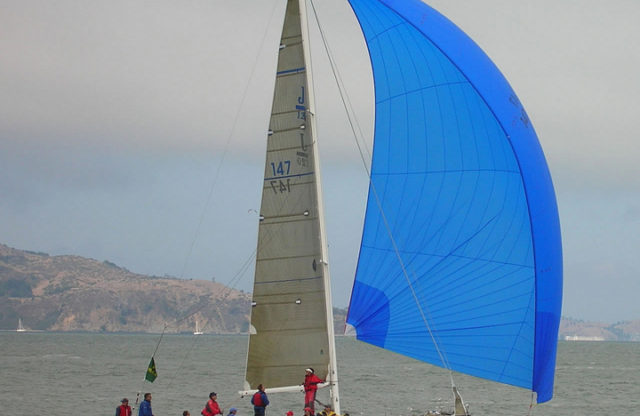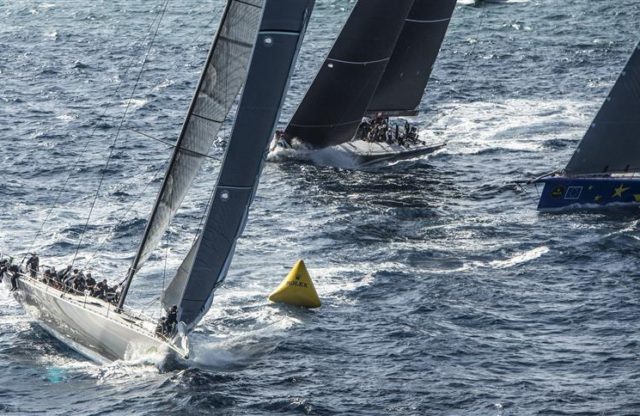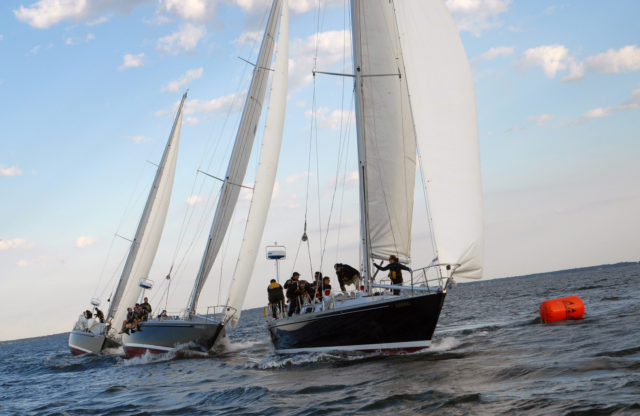Interview by TY Olsen ABOUT GREG TCO: Can you give us a little bit of background about yourself, sailing and coaching prior to Boston College and the Inter-collegiate Sailing Association (ICSA)? GW: Well, I started coaching college sailing in the spring of 1996 at the University of Vermont (UVM). Prior to advancing to UVM, I … Read More
Beat the Cold (and the competition): Wear Your Base-layers!
By Airwaves Writer Paige Hoffman It’s safe to say that the most difficult aspect of spring sailing in the Northeast is facing the cold. Knowing how to keep yourself warm on frigid days makes all the difference in staying up to speed during practice and competition. Getting uncomfortably cold may seem like an inevitable part … Read More
Tight Layline Management & The Art of the Shoot
By Airwaves writer Andrew Kerr Picture this: A team is approaching the weather mark in 3rd place on a tight starboard tack lay line , it looks like that with some good sailing they will make it around the mark ahead of 55 other teams and will be off and running with a good spinnaker set. … Read More
A Look at Forestay Sag
By Andrew Kerr A key element of upwind performance is forestay sag – how loose the forestay (or head stay on a masthead rig) is for the given set of wind and sea conditions. The setup is crucial to boat speed and pointing as it sets up the entry and power of the headsail as … Read More
Windward Spinnaker Takedowns, Revisited
By Airwaves writer Andrew Kerr Ah, spinnaker takedowns; either they go really well, or really bad. Your team is approaching the leeward mark on port tack getting ready for a port rounding , the mainsail controls are preset for upwind trim, the headsail is hoisted and the halyard is set to the conditions , the … Read More
Manage Your Sailing Program Toward Success: Part II, Team Building
By Airwaves writer Joe Cooper Check out Part I During my two America’s Cup campaigns we would generally try and pull the boats out of the water every day (Oh yes, things are much different today). With the boats on the hard or hanging in the travel lift straps the team members, those not working … Read More
Manage Your Sailing Program Toward Success
PART I: SAILBOAT RACING IS A MANAGEMENT EXERCISE Annapolis, MD (December 16, 2015) – By Airwaves Writer Joe Cooper Editor’s Note: This is the first in a series of articles, taking cues from successful business management principles, on how to manage a sailing program. Enjoy, and stay tuned for Part Two. Any group of humans … Read More
From the Experts: Headsail Changes
By Airwaves writer Andrew Kerr The call of “change the headsail “has resonated with teams since the inception of competitive sailing. It is one of the ultimate calls to action for a team as the crew hurriedly goes about their tasks, very often under the pressure of time, tactical needs and weather concerns. I remember- … Read More
Light Air Leeward Mark Roundings
By Andrew Kerr Like so many elements of sailing , rounding the leeward mark in light with the dual goals of the team exiting the mark at top speed and in clear air is a collection of small details , let ‘s look at the key elements to a good rounding: Approaching with speed is … Read More
3 Essential Tips for Improving Skipper / Crew Communication
By Jeff Doubek As a young sailor, literally wet behind the ears, my first lesson came the hard way: Learn your boat’s language. This happened one fateful day when my skipper said “Here we go!” and turned over the helm, leaving me pinned behind the jib. My naïve mind thought skippers always asked “Ready about?” … Read More
Outside Asymmetric Jibes Revisited
By Andrew Kerr While racing in the Round Block Island Race with a J122 team recently, we saw the value of an outside Jibe when it was blowing 25 to 33 knots plus with big waves. The wind built steadily and a required a jibe at the corner of the Island in a building following sea. We … Read More
Use of a Time and Distance Chart for Starting and Mark Roundings
By Andrew Kerr Recently when thinking about how racers utilize time and distance, I customized a chart to use as a reference for 1 minute of sailing from either a starting line or a mark. The purpose was to help with both starting proficiency and with estimating the length of a starting line. It also … Read More
Short Handed Sailing Practice Sessions
By Andrew Kerr The seemingly increasing demands of modern life on competitor’s time can make practice sessions very difficult to schedule with a full team – inevitably someone’s schedule does not work with the desired date. For example: a team has a regatta at the club 7 days away on the schedule and a fully … Read More
